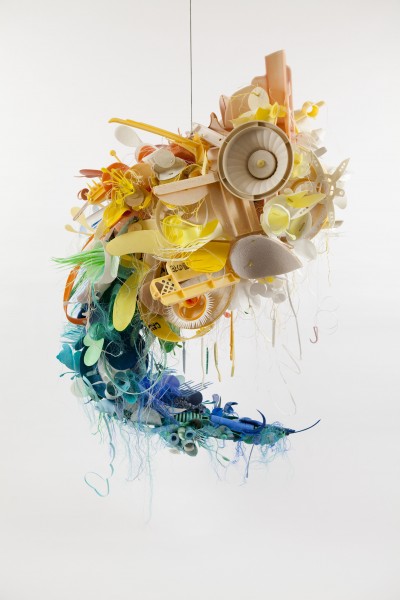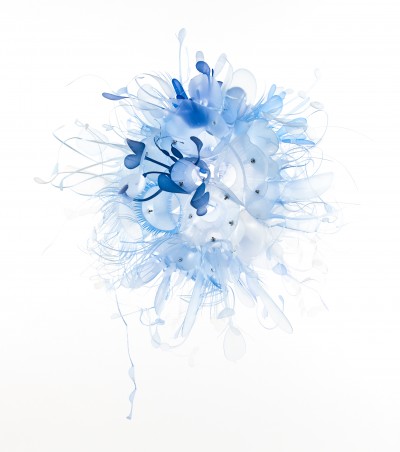
“Stayin’ Alive” at the McColl
Alluring, whimsical, imaginative and cheerful are all words that come to mind when viewing one of Aurora Robson’s plastic sculptures at the McColl Center for Art + Innovation, but so are the words complex, sustainable, pollution and toxic. It is rare to find this combination in one artist – one who can deal with the seriousness of plastic debris in our waterways in such a poetic and graceful manner. Robson’s exhibition “Stayin’ Alive” is on view until July 26th.
Robson intercepts waste stream plastic debris, excess packaging and junk mail to transform it into colorful, fanciful art. “Stayin’ Alive” is the artist’s first major solo exhibition in the Southeast, and it features new suspended and wall-mounted works, as well as a site-specific installation. The sculptures Robson creates resemble fantastical sea creatures with brightly colored appendages. Her goal is to “take this material that no one has cared for and imbue it with so much care it resonates.” Robson more than achieves her goal, creating tactile and engaging works that encourage the viewers to learn more about her process and the very real problem of plastic debris pollution, such as the Great Pacific Garbage Patch, which inspired Robson in the first place.
“Hesperus,” 2011, by Aurora Robson.
“I have been working with debris as my dominant medium for about a decade now. Plastic pollution is like a big dirty secret that plagues this country and is a growing global health concern. In this exhibition, I am addressing this issue and the issues surrounding it and at the root of it – in such a way that I hope empowers people and provides a platform for the proliferation of rational optimism,” said Robson in an interview with the McColl. The title of the exhibition, “Stayin’ Alive,” gets at this empowerment, asking people to consider what staying alive entails, and whether we can continue to sustain ourselves and our environment.
Recent Content
-
Artsarticle ·
-
Artsarticle ·
-
Artsarticle ·


